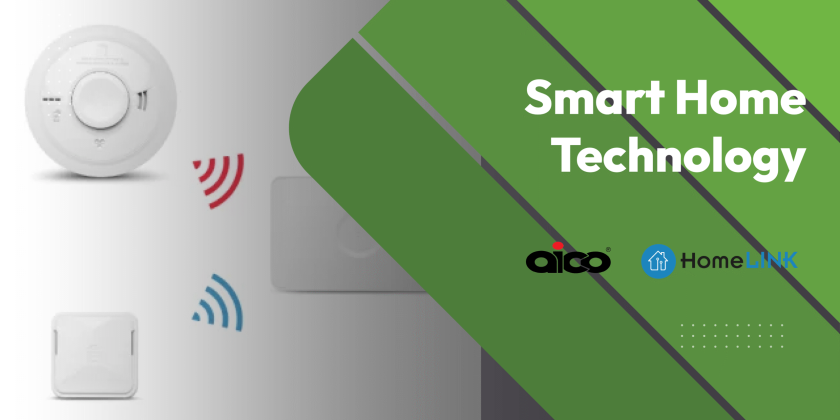As solar energy becomes an increasingly popular choice for homeowners and businesses alike, choosing the right solar panels can seem daunting. With many options available, each claiming to offer unique benefits, cutting through the jargon making the right decision is critical.
This guide provides clear, straightforward advice on what to consider when choosing solar panels, We’ll help you invest in the best solution to meet your energy needs and budget. From understanding different types of panels to evaluating efficiency and warranties, we’ll cover all the key factors to help you confidently navigate the world of solar power.
Solar Panel Basics
Types of Solar Panels
When choosing solar panels, it’s crucial to understand the different types available. The three main types are
- Monocrystalline
- Polycrystalline
- Thin-film
Monocrystalline panels are made from a single crystal structure, making them highly efficient and space-efficient. They tend to be more expensive but offer a longer lifespan.
Polycrystalline panels are made from multiple crystal structures and are generally less efficient than monocrystalline panels. However, they are more affordable and still perform well.
Thin-film panels are created by depositing photovoltaic material onto a surface like glass or metal. These panels are flexible and lightweight, making them ideal for unconventiofnal installations. They are usually less efficient and may require more space.
How Solar Panels Work
Solar panels convert sunlight into electricity through a process called the photovoltaic effect. Each panel has many solar cells made from semiconductor materials, typically silicon. When sunlight hits these cells, it excites the electrons, causing them to flow and generate a direct current (DC).
This DC electricity is then converted into alternating current (AC) by an inverter. The AC electricity powers your appliances and devices and can fed back into the grid, potentially earning you credits from your utility company.
The efficiency of this conversion process is key when selecting solar panels. It calculates how much electricity can be generated from sunlight.
Key Solar Panel Components
The actual solar panels are the key component. They contain photovoltaic cells that capture sunlight and convert it into electricity.
Next, the inverter is crucial. It converts the direct current (DC) produced by the panels into alternating current (AC). There are different types of inverters, including string inverters, microinverters, and power optimisers, each with benefits.
Mounting systems are another essential component. They secure the panels to your roof or ground setup. These must be durable and correctly installed to withstand various weather conditions.
Additionally, a solar performance monitoring system tracks the energy production and consumption. This helps you optimise your system’s efficiency.
Evaluating Your Energy Needs
Calculating Energy Usage
To get the right solar panel system for your home or business, you need to calculate your usage. You can do this by reviewing your electricity bills over the past year. Identify your average monthly and annual consumption, measured in kilowatt-hours (kWh).
Next, consider any future changes in energy use. Are you planning to buy new appliances, add an electric vehicle, or expand your living space? These factors can increase your electricity needs.
Understanding your peak energy usage times is also important. Solar panels generate electricity during daylight hours, so knowing when you consume the most energy can help optimise your system’s design and storage options.
By accurately calculating your energy usage, you ‘ll have a clearer picture of the number and type of solar panels needed.
Assessing Roof Space
Knowing the total area of your roof will allow let you know the potential space available for panel installation. Consider the shape, orientation, and pitch of your roof, as these factors influence the efficiency of solar energy capture.
South-facing roofs are ideal. They receive the most daily sunlight. East and west-facing roofs can also work, though they may produce slightly less energy. Flat roofs offer flexibility in panel placement but may need added mounting structures to get an angle.
Additionally, shading from trees, chimneys, or nearby buildings, can reduce panel efficiency. Your solar panel company will do a thorough assessment of your roof space.
Comparing Solar Panel Efficiency
Efficiency Ratings Explained
The efficiency rating indicates the percentage of sunlight that a panel can convert into usable electricity.
For instance, a panel with an efficiency rating of 20% converts 20% of the sunlight it receives into electrical energy.
Higher efficiency panels produce more electricity within the same space, making them ideal for rooftops with limited area. These panels tend to be monocrystalline due to their higher purity silicon cells, which offer better performance.
However, higher efficiency often comes with a higher price tag. While investing in more efficient panels can maximise energy production, it’s essential to balance this with your budget and energy needs.
Lower efficiency panels, such as polycrystalline or thin-film, can still provide adequate performance at a more affordable cost. Understanding the trade-offs between efficiency, cost, and space can help you choose the right panels for your specific situation.
Factors Affecting Efficiency
Several factors can impact the efficiency of your solar panels. One of the main factors is the quality of the photovoltaic cells. Higher-grade materials and superior manufacturing processes yield more efficient cells.
The orientation and angle of your panels also play a critical role. Panels facing south and tilted at an optimal angle capture more sunlight, thereby increasing efficiency. Shading from trees, buildings, or other obstructions can significantly reduce the panels’ performance.
Temperature is another important consideration. Solar panels generally operate more efficiently in cooler conditions. Excessive heat can reduce their efficiency, so ensuring adequate ventilation and choosing panels designed for high temperatures can mitigate this issue.
Additionally, the cleanliness of your panels affects their ability to absorb sunlight. Regular maintenance to remove dust, dirt, and debris ensures they operate at peak efficiency.
High-Efficiency Panel Options
For those looking to maximise energy production in limited space, high-efficiency solar panels are an excellent choice. Monocrystalline panels are the most common high-efficiency option, boasting efficiency ratings between 18% and 23%. They are made from single-crystal silicon, which allows for better electron flow and higher energy output.
Another high-efficiency option is Passivated Emitter and Rear Cell (PERC) technology. PERC panels include an additional layer that reflects unabsorbed light back into the cell, increasing overall efficiency. These panels can achieve efficiency ratings close to 25%.
Bifacial panels offer another high-efficiency solution by capturing sunlight on both the front and back surfaces. This design can boost energy production by up to 30%, particularly in environments with reflective surfaces like snow or water.
While high-efficiency panels come with a higher upfront cost, their increased energy output can lead to greater long-term savings and a quicker return on investment.
Budgeting for Solar Panels
Initial Costs Versus Long-Term Savings
The upfront expenses include purchasing the panels, inverter, mounting hardware, and installation labour. Depending on the system’s size and type, these costs can vary.
However, solar panels offer long-term financial benefits that can offset these initial expenses. Many companies also offer finance so you can spread the costs.
Once installed, solar panels immediately reduce or even eliminate your monthly electricity bills. Over time, these savings can add up, often paying back the initial investment within several years. Solar panels increase property value.
Installation and Maintenance Tips
Finding Reputable Installers
Selecting a reputable installer is crucial for the success of your solar panel investment. Start by researching local companies with solid track records and positive customer reviews. Check for accreditations from recognised industry bodies, such as the Microgeneration Certification Scheme (MCS).
Request quotes from multiple installers to compare pricing and services. A detailed quote should include an itemised list of costs, projected energy savings, and expected payback periods. Be wary of installers who provide vague estimates or pressure you into quick decisions and new companies who are exploiting the demand for solar.
Additionally, ask for references from previous customers and take the time to contact them about their experiences. A reputable installer will have no issues providing this information.
Finally, ensure the installer offers warranties for both the panels and the installation work.
Routine Maintenance Practices
One of the simplest but most important tasks is keeping the panels clean. Dust, dirt, and debris can accumulate on the surface, reducing their ability to capture sunlight. Regularly washing the panels with water and a soft brush can help maintain their efficiency.
Inspect the panels periodically for any signs of damage, such as cracks or loose connections. Addressing these issues promptly can prevent more significant problems down the line.
Additionally, check the inverter display for any error messages or irregularities in performance. Many modern systems come with monitoring software that provides real-time data on energy production, helping you identify any potential issues early.
Troubleshooting Common Issues
Even with proper maintenance, solar panel systems can occasionally encounter issues. One common problem is a drop in energy production. If you notice a significant decrease, start by checking for obstructions like dirt, debris, or shading that may be blocking sunlight.
Another issue might be malfunctioning inverters, which are responsible for converting DC to AC electricity. Check the inverter display for error codes or warning lights, and consult the manual or manufacturer’s website for troubleshooting steps.
Loose or corroded connections can also cause performance issues. Inspect the wiring and connections for any signs of wear and tear, and tighten or replace them as necessary.
If your system has a monitoring setup, use it to identify patterns or anomalies in energy production. This can help pinpoint specific issues more quickly.
By being proactive and addressing these common issues promptly, you can keep your solar panel system running efficiently and prevent minor problems from escalating into costly repairs.
If you are interested in Solar for your home or business or have any questions, contact us today.



